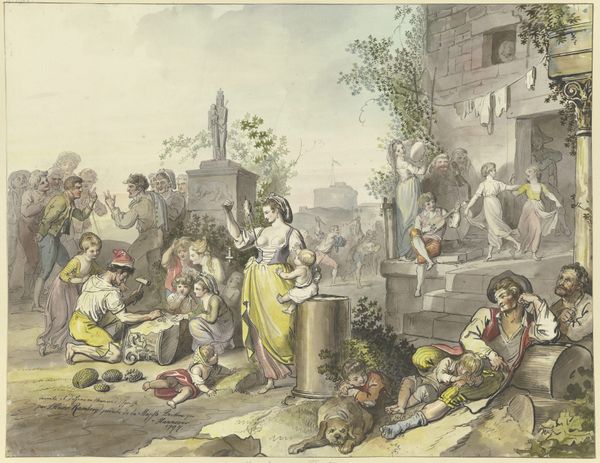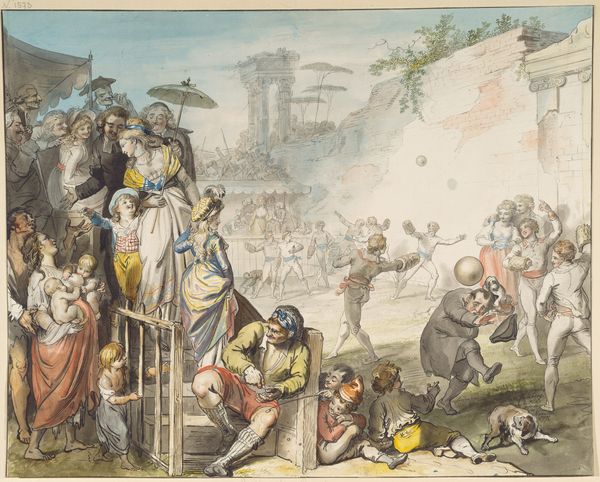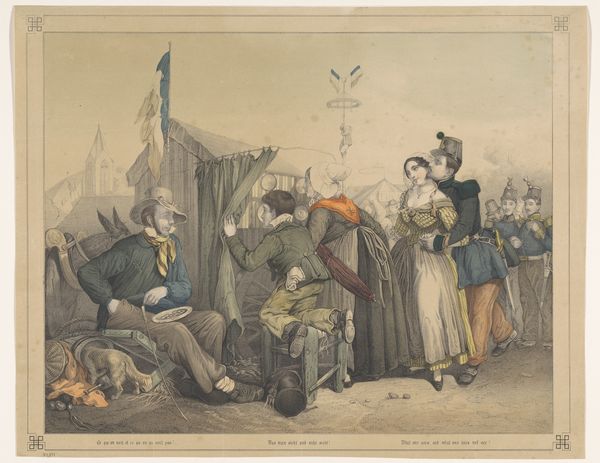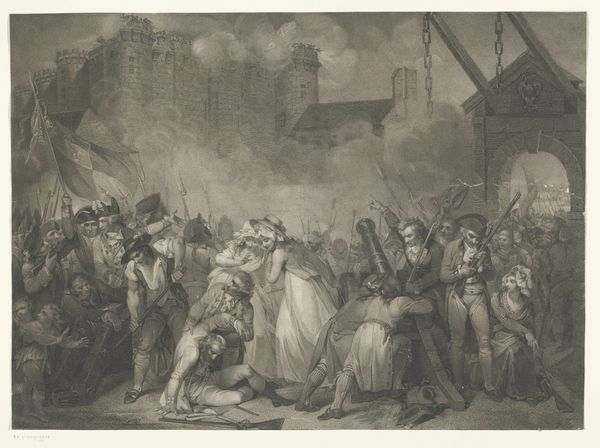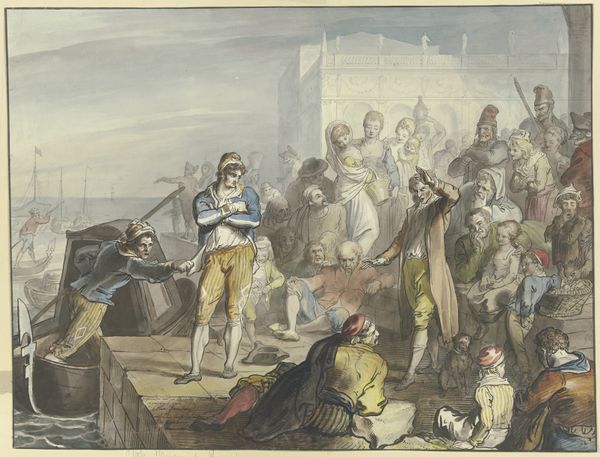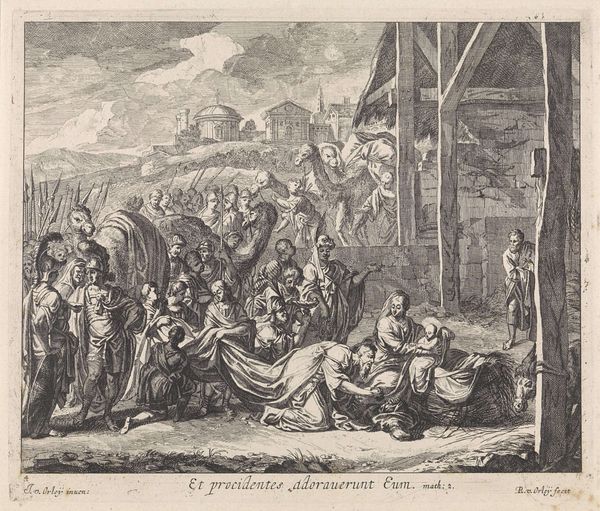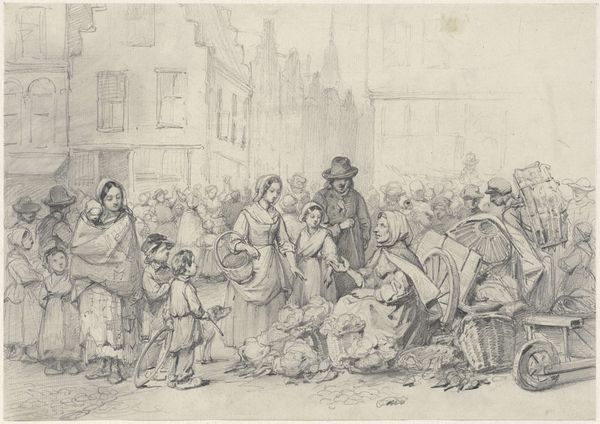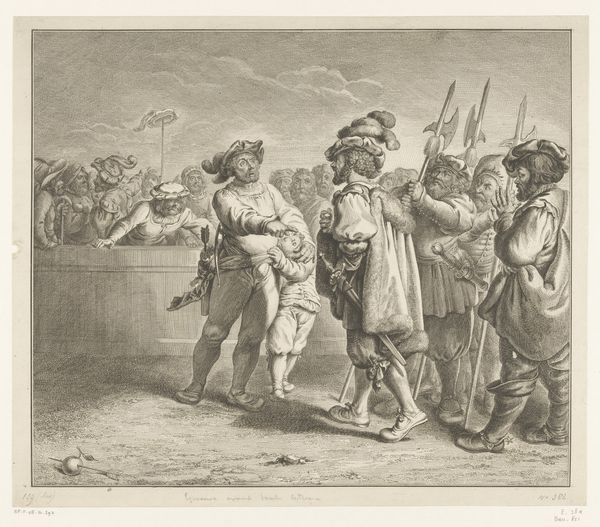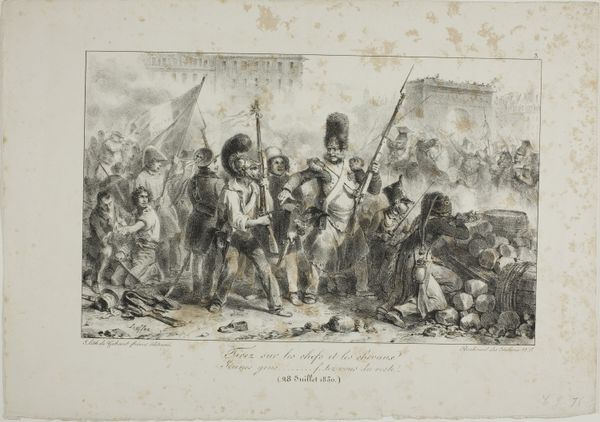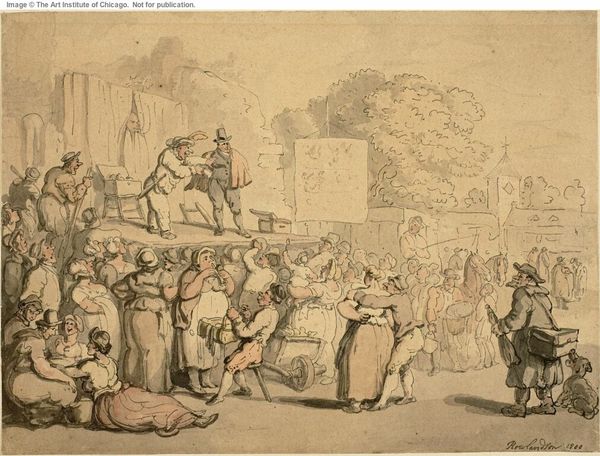
drawing, coloured-pencil, paper, ink, pencil, graphite
#
portrait
#
drawing
#
coloured-pencil
#
landscape
#
figuration
#
paper
#
ink
#
coloured pencil
#
classicism
#
group-portraits
#
pencil
#
line
#
graphite
#
cityscape
#
genre-painting
#
history-painting
Copyright: Public Domain
Curator: Johann Heinrich Ramberg’s 1797 drawing, “Bänkelsänger auf der Piazetta in Venedig,” captures a scene at the Piazza San Marco, rendered in ink and colored pencil on paper. Editor: It's instantly striking—the muted palette lends a sort of melancholic, almost ghostly atmosphere. And the composition, crowded as it is, somehow feels…dynamic? Like a captured moment in time. Curator: Ramberg’s technique is noteworthy. The detailed linework, particularly in rendering the figures' clothing and expressions, contrasts with the softer washes that define the architectural backdrop. You can almost feel the texture of the paper beneath the varying pencil strokes. The commercial vendors in Venice at the time would've provided the material conditions that shaped street performances as popular entertainment, drawing everyone in together through art and economic transactions. Editor: It's fascinating to consider the social dynamics. Look at the clear stratification: the more affluent observers standing back, detached, while others seem caught in the thick of it. The Bänkelsänger, essentially a ballad singer, serves as the focal point, disseminating narratives. It begs the question: whose stories are being told here? Who is represented and how? Is this depiction empowering or exploiting of these working class people who were providing public entertainments? Curator: The materiality and portability of the broadsheet these performers used would've been vital for the wide dispersal of these stories, often sensational and moralizing tales for mass consumption. Note too the architectural space of the Piazetta—the drawing almost flattens against the architecture as if it is another prop to be consumed along with the musical performance, a commentary on social classes during Ramberg’s time. Editor: And beyond class, think about the representation of gender. Women are present, but seemingly passive, observers, perhaps emblematic of societal roles dictated by gendered expectations and limitations during this era. Art has historically been a reflection and perpetuation of power structures, and this snapshot from 1797 offers critical insight into late 18th-century European culture through its gender, race, and socioeconomic layers. Curator: Precisely. Ramberg gives us a slice of life but with an acute awareness of the materials that enabled the construction of stories themselves: paper, pigment, and the literal stage upon which these social narratives were performed. Editor: This artwork isn't simply a pretty scene of 18th-century Venice; it’s a site for critically engaging with the historical undercurrents that still reverberate in art, labor, and politics today.
Comments
No comments
Be the first to comment and join the conversation on the ultimate creative platform.

